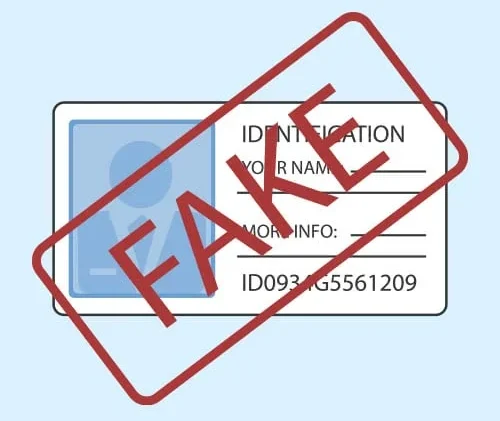Understanding the Link Between Real ID and Self-Storage Tenant Screening
Self-storage facilities rely on trust. When a business rents a unit, it entrusts physical space—and often valuable items—to a tenant. Effective tenant screening is the backbone of this trust, ensuring that those granted access are who they claim to be. In recent years, the introduction of Real ID has reshaped how identity verification works, particularly in sectors where reliable identification is critical. For self-storage operators, integrating Real ID into tenant screening processes isn’t just a trend; it’s a practical step to enhance security, reduce risks, and align with evolving federal standards.
Real ID, established by the 2005 REAL ID Act, sets minimum security standards for state-issued driver’s licenses and identification cards. By May 7, 2025, these IDs will be required for accessing federal facilities, boarding domestic flights, and other federal purposes. For self-storage businesses, the relevance lies in the enhanced validity of these IDs: Real ID-compliant cards include advanced security features (like holographic overlays, laser-engraved images, and machine-readable zones) that make them harder to counterfeit. This added layer of authenticity directly supports more reliable tenant screening.

Why Real ID Changes the Game for Tenant Screening
Traditional tenant screening in self-storage often involves collecting a government-issued ID, running basic background checks, and verifying contact information. While these steps help, they’re not foolproof. Identity fraud remains a concern—cases where tenants use fake or stolen IDs to rent units, sometimes for illegal activities like storing stolen goods or hazardous materials. Real ID addresses this by raising the bar for what qualifies as a valid, verifiable form of identification.
Consider this scenario: A facility rents a unit to someone using a counterfeit driver’s license. Later, authorities discover the unit holds stolen property. Without a legitimate ID trail, tracking the tenant becomes nearly impossible, leaving the facility liable for damages or legal complications. By requiring Real ID (or equivalent federal IDs), operators create a clearer paper trail, making it easier to confirm a tenant’s identity and hold them accountable if issues arise.
Beyond fraud prevention, Real ID also streamlines compliance. As more states adopt Real ID, self-storage businesses can standardize their screening processes. Instead of navigating varying levels of ID security across regions, they can focus on verifying a single, federally recognized standard—simplifying training for staff and reducing errors in manual checks.

Steps to Integrate Real ID into Tenant Screening
Adopting Real ID for tenant screening isn’t about overhauling existing systems; it’s about refining them. Here’s how self-storage operators can smoothly incorporate Real ID into their processes:
- Train Staff on Real ID Features
Not all staff may recognize Real ID’s security markers. Host workshops to teach teams what to look for: the gold star in the top-right corner (indicating compliance), tactile features like raised lettering, and embedded holograms. Provide physical examples of Real IDs versus non-compliant IDs to sharpen recognition skills. - Update Rental Agreements and Policies
Revise rental applications to explicitly state that Real ID (or an approved alternative, like a U.S. passport or military ID) is required for tenant screening. Include this requirement in online FAQs and in-person discussions to set clear expectations for potential renters. - Use Digital Verification Tools
Manual checks have limits. Partner with ID verification services that use technology to scan and validate Real IDs. These tools can read the machine-readable zone (MRZ) on the ID, cross-referencing data with state DMV databases to confirm authenticity in seconds. - Prepare for Transition Periods
Until May 2025, non-Real ID licenses remain valid for most state purposes. Facilities should accept these temporarily but proactively inform tenants about the upcoming deadline. For example, include a note in rental agreements: “Starting May 7, 2025, a Real ID or approved federal ID will be required for tenant screening.” - Securely Store Collected Data
Real ID contains sensitive information (name, address, date of birth). Store physical copies in locked files and digital copies in encrypted databases. Limit access to only necessary staff, and delete records once a tenant vacates (unless legally required to retain them).
Handling Exceptions: What If a Tenant Doesn’t Have a Real ID?
Not every tenant will have a Real ID by 2025. Some may live in states that haven’t fully implemented the standard, while others may prefer alternative forms of identification. In these cases, self-storage facilities can accept other federally approved IDs, including:
- U.S. passport or passport card
- U.S. military ID (including dependent IDs)
- Permanent resident card (Green Card)
- Trusted Traveler Program cards (e.g., Global Entry, NEXUS)
- Transportation Worker Identification Credential (TWIC)
It’s critical to cross-reference the TSA’s list of acceptable IDs, as it’s updated periodically. For tenants with non-U.S. IDs, require additional verification—like a valid visa or work authorization—to ensure compliance with local and federal laws.
Common Tenant Screening Challenges with Real ID: Solutions
Even with clear processes, self-storage operators may face hurdles. Below are five common issues and actionable solutions:
1. “A Tenant Claims They Can’t Get a Real ID—Can We Still Rent to Them?”
Challenge: Some tenants may struggle to obtain Real IDs due to missing documentation (e.g., birth certificates, proof of residency).
Solution: Direct them to state DMV resources explaining Real ID requirements. If they’re unable to comply, offer temporary rentals (30–60 days) while they work to obtain valid ID. For long-term rentals, require an alternative federal ID (e.g., passport) as a condition of the lease.

2. “How Do We Spot a Fake Real ID?”
Challenge: Counterfeiters may replicate Real ID security features.
Solution: Use digital verification tools that scan the ID’s MRZ and cross-check data with state databases. For manual checks, train staff to look for inconsistencies: misaligned holograms, blurry text, or missing tactile features (e.g., raised printing on the name). Report suspicious IDs to local authorities.
3. “We’re Collecting Too Much Personal Data—Is This a Risk?”
Challenge: Storing excessive tenant data (e.g., Social Security numbers) increases the risk of breaches.
Solution: Only collect necessary information: full name, date of birth, and ID number (from Real ID or alternative ID). Avoid requesting SSNs unless legally required. Use secure, password-protected software to store data, and encrypt files before backing them up.
4. “Tenants Are Uncomfortable Sharing Real ID Info—How Do We Address Concerns?”
Challenge: Privacy worries may deter potential renters from providing Real ID details.
Solution: Transparency builds trust. Explain why Real ID is required (to protect their unit and others from theft, fraud, or illegal activity). Share your data privacy policy, detailing how info is stored, who accesses it, and how long it’s retained. Offer to redact sensitive fields (e.g., ID number) on paper copies if requested.
5. “Staff Struggle to Keep Up with Real ID Updates—How to Improve Training?”
Challenge: Turnover or infrequent training can leave staff unprepared.
Solution: Create a quick-reference guide with images of valid Real IDs, security features, and approved alternative IDs. Host quarterly refreshers (in-person or via video) and include Real ID verification in new hire onboarding. Reward staff who consistently spot fake IDs or resolve tenant concerns effectively.
By integrating Real ID into tenant screening, self-storage facilities take a significant step toward safer, more reliable operations. While challenges exist, proactive training, clear communication, and smart technology adoption can turn potential roadblocks into opportunities for stronger tenant relationships and enhanced security.


